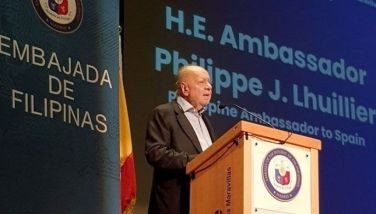Power unleashed
The hunger rate has gone up to 20.3 percent in the second quarter from 15.5 percent during the first quarter. This means that 3.7 million families from the previous quarter’s 2.9 million families experienced having nothing to eat at least once in three months. This is translated to an average figure of 16 million hungry individuals from the previous 12 million.
I hope these poor people are thought of in real terms by our local government leaders, electioneering personalities, militant people’s or pro-people’s groups, so-called reformists and change movements, church leaders and other politicians. As they harp about their so-called commitment and promises to make the situation better, and criticize the present government no end, do each of them really know where these poor people are scattered throughout the archipelago?
President Arroyo’s government, in 2006, started to implement the Accelerated Hunger Mitigation Program (AHMP) and identified through the Philippine Food Insecurity and Vulnerability Information and Mapping System (FIVIMS) that the hungry and poor families are located in 49 out of 77 provinces, ranked as Highly Vulnerable. After all these years, and change of governments, the hungry and poor remain. A survey of self-rated poverty (SRP) showed a decreasing average rate from 64.5 during Marcos time, 63.4 under Aquino, 62.2 under Ramos, 59.56 under Estrada and 53 percent under the present administration as of December 2008.
Many families may have been helped, some may have managed to escape their situation over the years, impoverished families may have, by some stroke of luck, been uplifted to a better life than before. One thing is sure, with the expected increase in unemployment, the increasing population and diminishing resources amidst a global economic slowdown, it is difficult to expect the number of poor and the hungry to go down drastically in the years to come unless we achieve significant economic growth that will narrow the gap considerably between the rich and the poor and the low average income families.
Hunger is a terrible need that puts men in the chains of hopelessness. If the hunger and poverty situation persist, we expect the crime rate to go up, making it hard for us to achieve the economic growth we hope for.
A critical success factor in solving this perennial problem of hunger in the 49 highly vulnerable provinces is an effective government in the grassroots level, meaning in the smallest barangays in these target areas. An enemy can only be defeated if you know it by heart; likewise, hunger and poverty can only be reduced if we know where it prevails.
The solution seems simple and obvious — introduce feeding programs and fund food dole-outs and subsidies in these identified areas while helping heads of families start their own small business to earn extra income and help farmers achieve a good harvest. But all these cannot be done without an honest, hardworking and committed barangay or local leader determined to improve and uplift the lives of the residents under his jurisdiction. How many barangays comprise the 49 Highly Vulnerable provinces for hunger and poverty and how many of these are blessed with a good barangay leader, and for that matter, a good and efficient city mayor who diligently takes in serious consideration the needs of all these barangays under him? These local leaders need to realize the potential power they have in their hands to effectively tackle this persistent problem and the attitude, honesty, commitment and dedication they need to have in order to unleash this power.
It is then no wonder that no matter how good our former and present presidents have been, the problems remain, for they can only set the policies and directions and allocate the funds, but the work has to be done in the grassroots by the foot soldiers so to speak because this is where the problems are. Future presidents will face the same criticism of failure if this potential power in the grassroots remains untapped and alas, the poor and hungry will remain, and most probably even swell in number unless a drastic change in the attitudes of local leadership is realized.
Let us stop finger pointing and pulling down each other. Instead we should spend the precious time getting our minds, hearts and hands together to do what needs to be done, minus the politics. I hope to see the hunger number go down because I believe nothing is impossible if we set in our hearts to do it.
- Latest
- Trending
























